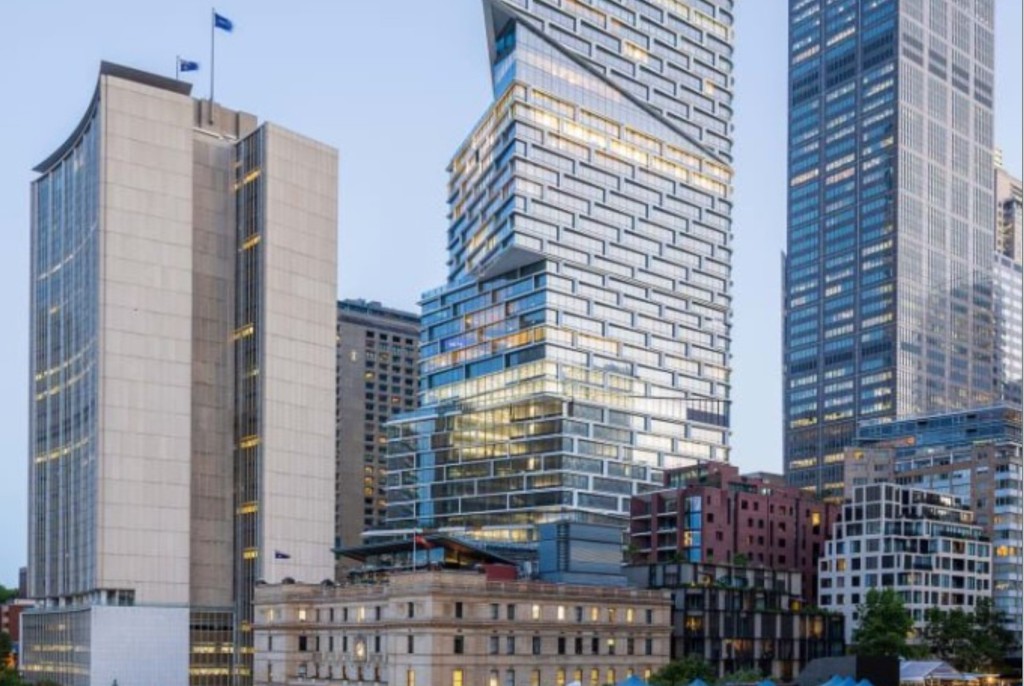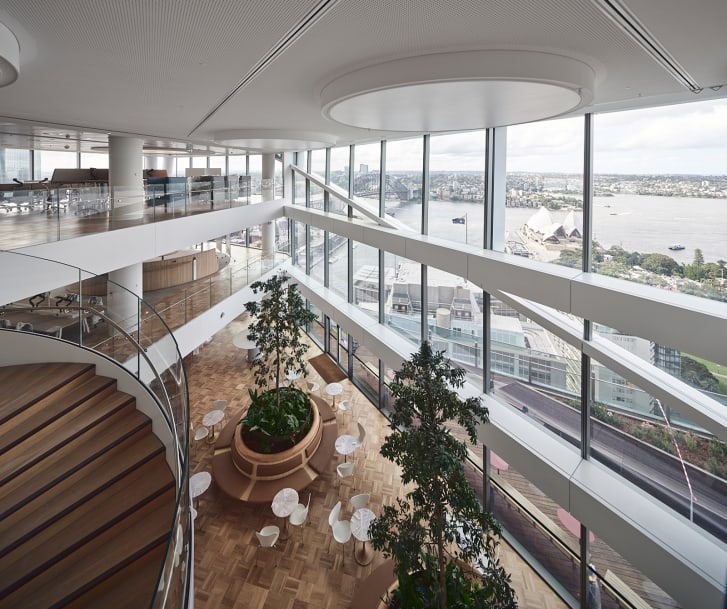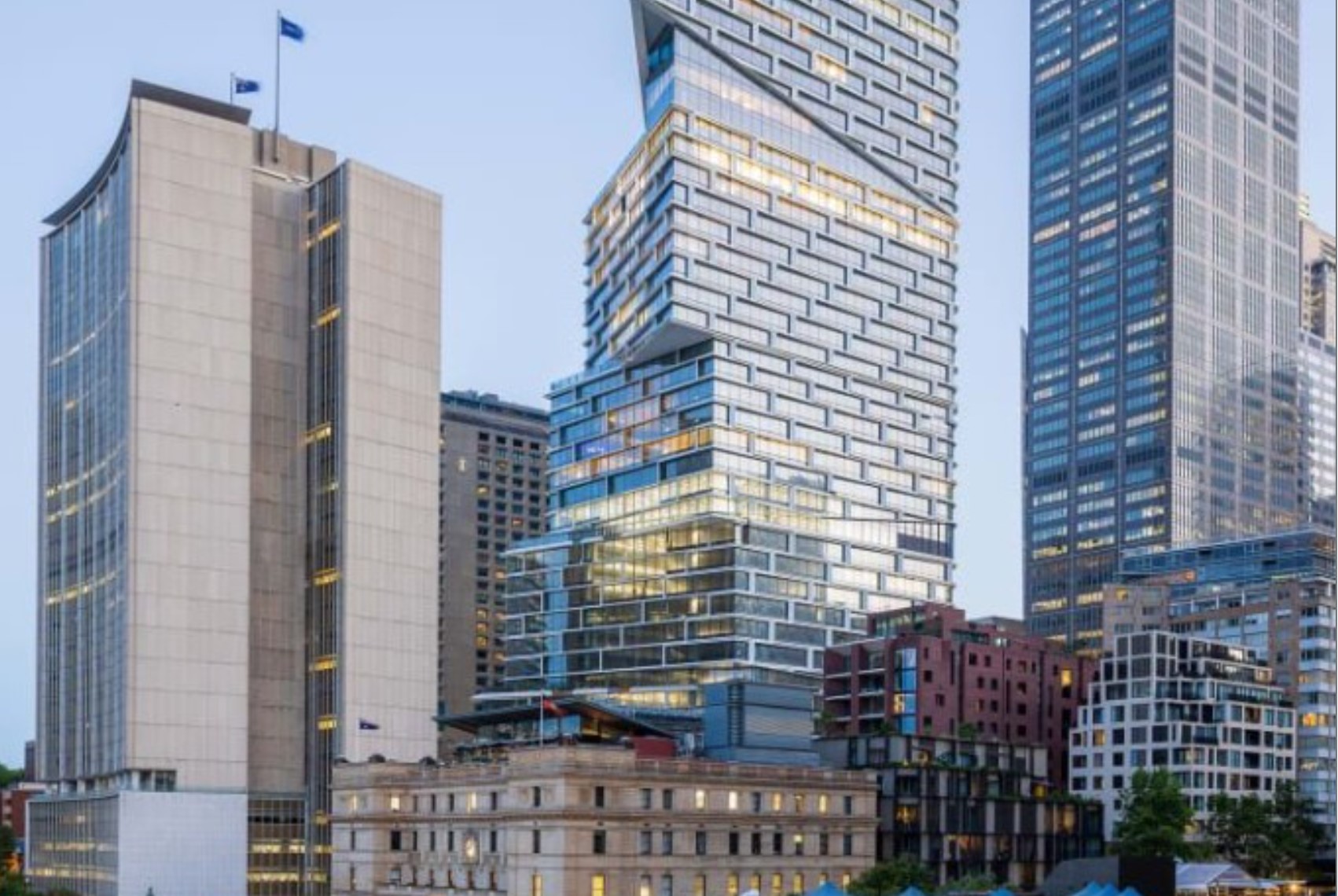
In 2014, the Australian firm AMP Capital launched a bold and bizarre call to action to the architectural community of Sydney—replace their skyscraper headquarters without demolishing it.
They wanted their AMP Center, the once-tallest building in Sydney, to become the world’s first “upcycled skyscraper,” and the results were truly inspirational.
By grating a second tower onto the existing core of the AMP Center and not demolishing it, 12,000 tons of CO2 were saved which would have otherwise been created through the use of heavy machinery and the loss of carbon captured in the cement. 12,000 tons is equal to 3 years of the 49-story tower’s maximum energy consumption.
Built in the 1970s, the AMP Center wasn’t necessarily on its last legs, but wasn’t viable for the company any longer. But the firm was unwilling to commit to the massive costs of carbon and money when another option was available.
First though, sufficiently bold architects were needed for the project. Three firms teamed up, led by Danish architects 3XN, an Engineering company called Arup, and the Australian architects BVN.
“The tower was coming to the end of the end of its life, in terms of viability… but the structure and the ‘bones’ can actually last a lot longer,” said Fred Holt from 3XN in a video interview. “You can’t always retain everything. But if you can retain the structure—and that’s where the majority of your embodied carbon is—then you’re lowering your footprint.”
MORE ARCHITECTURE NEWS: When Architect Asks AI to Design Futuristic Skyscrapers It Proposed a Vertical Forest
At first it was unclear how much of the original structure would be saved. Beginning on the project, the team realized the original tower was actually about 4 meters shorter than the original drawings suggested.
Towers, it turns out, shrink—a result of the concrete spreading and settling. And it was only when construction began in 2018 that the architects could really get a sense of whether the concrete was as strong as their initial estimates, as well as where—and how much—extra weight could be placed.

They installed hundreds of sensors to track the tiniest of movements to ensure that by aligning their new construction with the old one, there wouldn’t be any surprises waiting for them at key moments.
In short, the build was a huge success, and the architects boast that walking from the new construction into the old tower is an unnoticeable transition.
MORE SUSTAINABLE TOWERS: The New Green Building Revolution Uses Timber to Build ‘Plyscrapers’ That Save Tons of CO2
Five stacked units with sharp points twist up toward the sky, while an envelope covers both the new extension and the old tower such that no one could tell the difference. Office space was expanded from 4,500 to 9,000 personnel, and the lack of demolition saved AMP around AUD$150 million.
The Quay Quarter Tower, as it’s called, won World Building of the Year upon its opening late in 2022. 3XN hopes it serves as a case study for the future potential in upcycling towers.
WATCH the transformation below…
SHARE This Unheard Of Upcycling With Your Carbon-Conscious Friends…




















